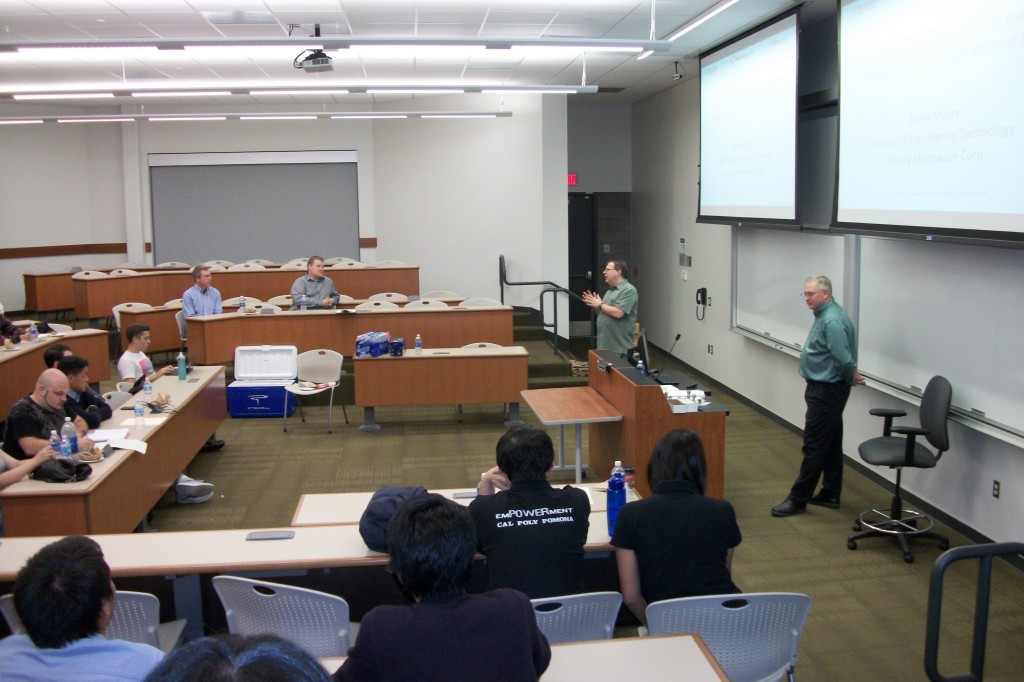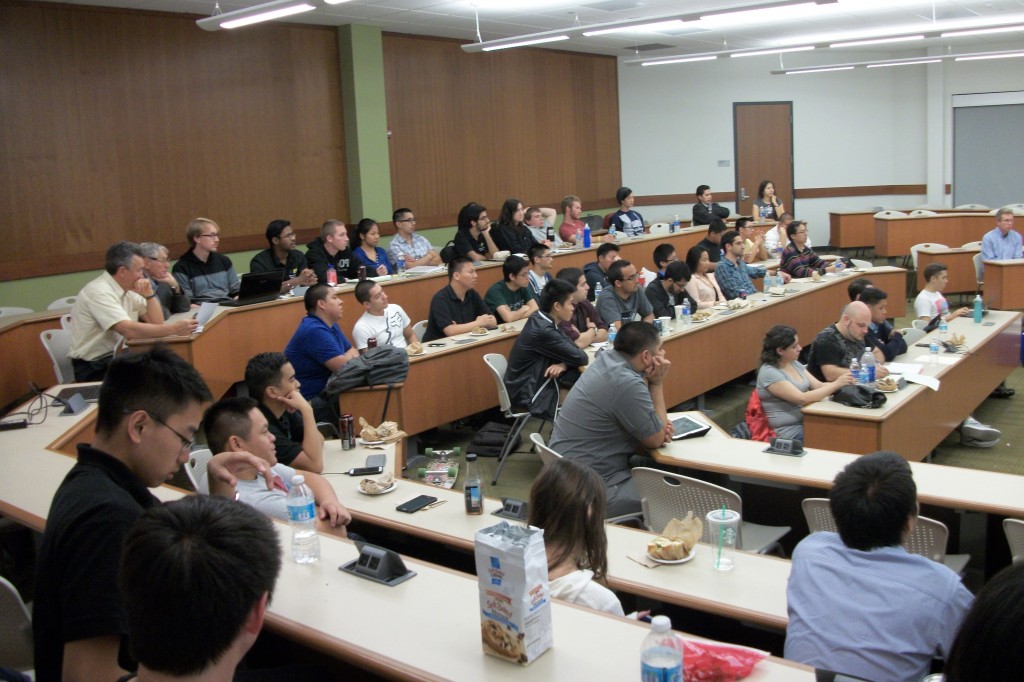Successful Presentation on Microwave Calibration November 14, 2013
| November 20, 2013 | Posted by Frank Gomez under COMSOC, CS, EDCAS, MTT/APS |
Comments off
|
Thursday, November 14, marked the date of Mr Rusty Myers return to the IEEE Foothill Section to give a talk on “Microwave Calibration Revisited”. He had earlier given such a talk in January; this was a return engagement to update a new group of IEEE Foothill Students and IEEE Members on this topic. Our IEEE Foothill group assembled, over 60 attendees strong, in a classroom / lecture hall in the new Business School Building on the Call Poly Pomona campus for a stimulating lecture.
Mr Myers was able to draw on his extensive engineering work in developing microwave calibrations at Maury Microwave in nearby Ontario, CA. Maury Microwave manufacturers an extensive line of precision microwave tools and equipment. By precision we mean calibration equipment with verification data traceable to NIST (National Institute of Science and Technology) standards. Mr Myers has hosted factory tours during the past Spring 2013 at the Maury facility for groups of students from four engineering schools in our section. Based upon the IEEE students’ questions and stated interests at these tours, he offered an updated presentation.
The issue with microwave calibration, and the need for precision in such calibration, is the requirement, for example, for other EEs designing high frequency circuits to quantify the performance of vector network analyzers (VNA). Once these are calibrated, then these VNA can be used as the workhorses in any high frequency / RF lab. Whether one is investigating wireless systems or medical RF systems or any other high frequency system, a calibrated VNA is ready to yield quantifiable results.
(A Note for IEEE Foothill Students: A quick read through a VNA manufacturers’ users guide, such as the Agilent PNA User’s Guide for Firmware A.09.90, or the HP 8510 VNA guide, will show you just what this means. If you are interviewing for an EE position, and you are in the company’s test lab, ask to see their VNA, and inquire how they are calibrating this instrument, and how they are maintaining its calibration. After this presentation, you should be ready for a good technical conversation.)
Mr Myers covered in depth the methods of calibration, including SOLT (Short-Open-Line-Thru) and TRL (Thru-Reflective-Line). The advantages and technique of these various methods was explored. For TRL, with 2 ports, and initially 12 unknowns, he explained the 10 measurements, and the resulting 8 unknowns, and how to handle this situation. Yes, it was a very thorough explanation of the theory behind the calibrations. As for the techniques needed to make a “good” calibration, an explanation of the proper torqueing of the connector, and the calibration kit supplied Maury band-color coded torque wrench, was given.
Several of the student attendees had some interesting questions for Mr Myers. Could a better “open circuit” termination be made with a “short circuit” and an airline, in place of an airline of known characteristics with an “open” end? Does the finish in the calibrated waveguides show quasi-optical effects at these stated microwave frequencies? We will let you, and our IEEE Foothill students, ponder these questions. You may consider uses of a quarter-wave “shorted” stub transformer, and examine just when raising the RF frequency to what range of values such that the RF wavelengths then become comparable to possible scattering discontinuities in the waveguide.
It was a very productive meeting for all the IEEE Foothill members in attendance. We thank My Rusty Myers for his presentation, as well as Max Cherubin, our IEEE Foothill MTT chair, and Professor Jerry Herder of Cal Poly Pomona for their organization and arrangements.

CPP Business School Lecture Hall welcomes some distinguished visitors and an important topic-Microwave Calibration
